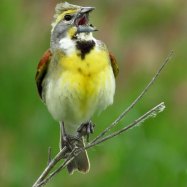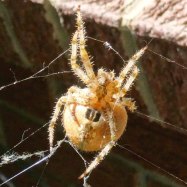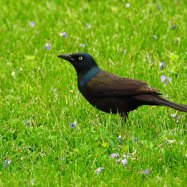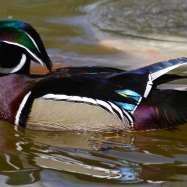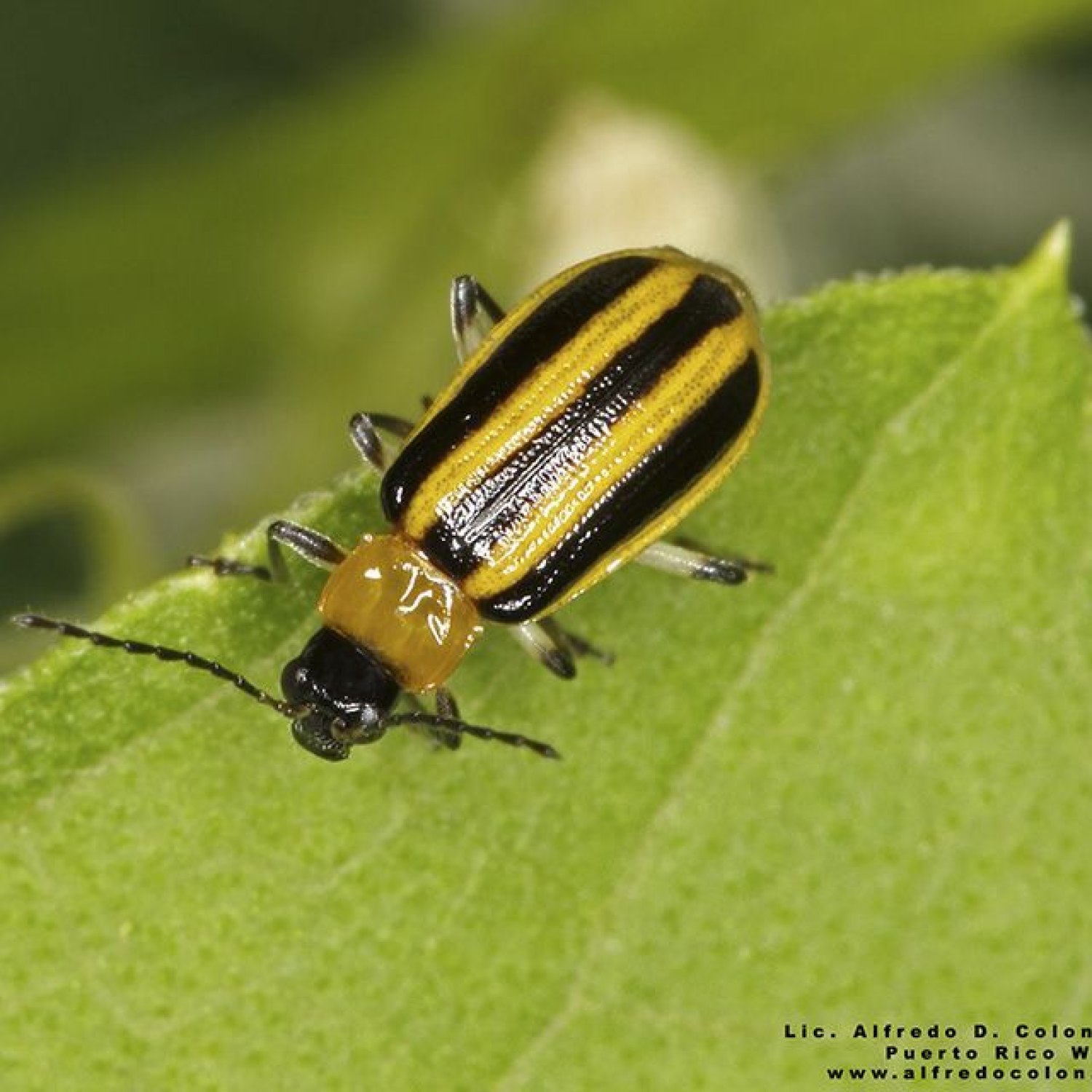
Cucumber Beetle
3 to 6 mm
Cucumber Beetles may be small, but they can cause big problems for farmers and gardeners. These oval or elongated insects, found worldwide, feed on plants such as cucumbers, melons, and squash, damaging leaves and fruits. With a body length of 3 to 6 mm, it's no wonder they can quickly infest crops. Keep an eye out for these pests and take measures to protect your plants. #CucumberBeetle #GardeningTips #PestControl
Animal Details Summary:
Common Name: Cucumber Beetle
Kingdom: Animalia
Habitat: Agricultural fields, gardens, and grassy areas
The Intriguing World of the Cucumber Beetle: A Tiny Pest with a Big Impact
The animal kingdom is a diverse and fascinating place, full of creatures large and small, each with their own unique characteristics and roles in the ecosystem. Among these creatures, one species stands out for its impact on crop production and its widespread geographical distribution - the Cucumber Beetle.Also known by its scientific name, Diabrotica spp., the Cucumber Beetle is a small but mighty insect that belongs to the order Coleoptera, commonly known as beetles Cucumber Beetle. With its olive-green or yellow coloration and oval or elongated body shape, this tiny pest may not seem like much at first glance. However, a closer look reveals that it is a highly adaptable and troublesome creature that has gained a notorious reputation in the world of agriculture and gardening.
In this article, we will delve deeper into the world of the Cucumber Beetle to discover its fascinating characteristics, impact on the environment, and potential control methods.
A Small Creature with a Big Presence
The Cucumber Beetle, also known as the Southern Corn Rootworm, is a member of the Chrysomelidae family, commonly known as leaf beetles. It is widespread in North and Central America, but its specific country of origin is still unknown. Due to its wide distribution, it is considered a significant pest in countries worldwide.Measuring only 3 to 6 mm in length, the Cucumber Beetle may seem insignificant, but it has a significant impact on its surroundings. Its small size allows it to hide and reproduce easily without being detected, making it a challenging pest to control. The beetle's body is typically yellow, green, brown, or black, allowing it to blend in with its surroundings and avoid predators California Kingsnake.
Feeding Method and Impact on Agriculture
The Cucumber Beetle is a herbivorous insect, meaning it feeds on plants. It is also known as a generalist feeder, meaning it feeds on a wide range of crops, including cucumbers, melons, pumpkins, and beans. It also feeds on the roots of corn plants, making it a particularly troublesome pest for farmers.The beetle's impact on agriculture is significant, as it can cause severe damage to crops by eating their leaves, stems, and roots. The larvae of the Cucumber Beetle burrow into the soil and feed on the roots of plants, stunting their growth and reducing their yield. In some cases, the beetle can also spread plant diseases, further exacerbating its impact on crop production.
In addition to its direct impact on crops, the Cucumber Beetle also affects the agricultural industry indirectly. The use of pesticides and other control methods to manage the beetle's population can be costly for farmers and may have negative effects on the environment. This pest also poses a threat to organic farming, as many of the commonly used pesticides are not allowed in organic agriculture.
The Beetle's Habitat and Adaptability
The Cucumber Beetle prefers to live in agricultural fields, gardens, and grassy areas, where it can feed on a variety of plants. Its adaptability allows it to survive in different environments and climates, making it a formidable pest for farmers worldwide. It is most active during the summer months when the weather is warm, but it can survive the winter by hibernating in plant debris or in the soil.In addition to its physical adaptability, the Cucumber Beetle is also a master of adaptation at the genetic level. It has shown the ability to evolve quickly, developing resistance to commonly used pesticides, which makes it even more challenging to control.
A Potential Threat to Biodiversity
While the impact of the Cucumber Beetle on agriculture is well-known, its effect on the environment and biodiversity is often overlooked. This pest can reduce the diversity of plant species in an area by feeding on a wide range of crops, which affects other plant-eating insects that rely on those plants for food. This can cause a ripple effect that impacts the entire ecosystem.Additionally, the use of pesticides to control the beetle's population can also harm other beneficial insects, such as pollinators, leading to further disruption in the ecosystem.
Control Methods and Future Perspectives
The Cucumber Beetle is a challenging pest to control due to its adaptability and high reproductive rate. However, there are several methods that can be used to manage its population. These include cultural practices such as crop rotation and timely planting, trap cropping, and the use of natural enemies such as parasitic wasps and ground beetles.There is also ongoing research on biological control methods, including the use of fungi and bacteria, which could prove to be effective against the Cucumber Beetle. Additionally, genetic engineering techniques are being explored to develop crops that are resistant to the beetle's feeding.
In Conclusion
In conclusion, the Cucumber Beetle may be small in size, but its impact on the environment and agriculture is significant. Its adaptability, high reproductive rate, and ability to evolve quickly make it a formidable pest for farmers and gardeners worldwide. It is essential to continue research and development on effective control methods to manage this pest's population and minimize its impact on the environment.As we continue to learn more about the Cucumber Beetle, it becomes clear that even the smallest creatures can have a significant impact on the world around us. As a society, we must strive to find a balance between preserving biodiversity and sustaining agricultural production, even in the face of challenges such as the Cucumber Beetle.

Cucumber Beetle
Animal Details Cucumber Beetle - Scientific Name: Diabrotica spp.
- Category: Animals C
- Scientific Name: Diabrotica spp.
- Common Name: Cucumber Beetle
- Kingdom: Animalia
- Phylum: Arthropoda
- Class: Insecta
- Order: Coleoptera
- Family: Chrysomelidae
- Habitat: Agricultural fields, gardens, and grassy areas
- Feeding Method: Herbivorous
- Geographical Distribution: North and Central America
- Country of Origin: Unknown
- Location: Worldwide
- Animal Coloration: Yellow, green, brown, or black
- Body Shape: Oval or elongated
- Length: 3 to 6 mm
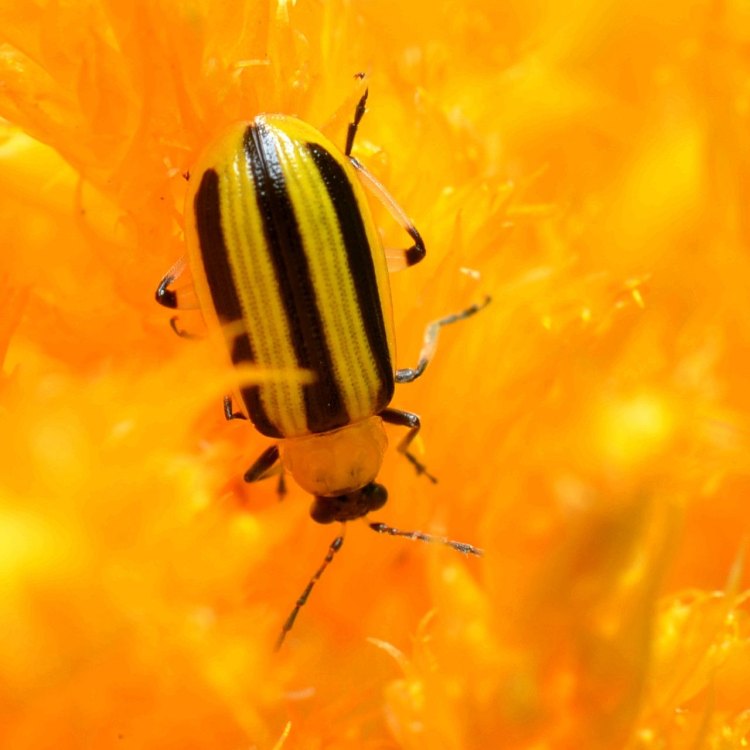
Cucumber Beetle
- Adult Size: Small
- Average Lifespan: 2 to 10 weeks
- Reproduction: Sexual
- Reproductive Behavior: Mating occurs after emergence from pupae
- Sound or Call: Unknown
- Migration Pattern: Non-migratory
- Social Groups: Solitary
- Behavior: Feeds on leaves, flowers, and fruits; can be a pest for cucurbit crops
- Threats: Predators, insecticides
- Conservation Status: Not evaluated
- Impact on Ecosystem: Can damage agricultural crops
- Human Use: Considered a pest
- Distinctive Features: Striped or spotted elytra
- Interesting Facts: Cucumber beetles can transmit bacterial wilt disease to cucurbit crops
- Predator: Birds, spiders, and other insects
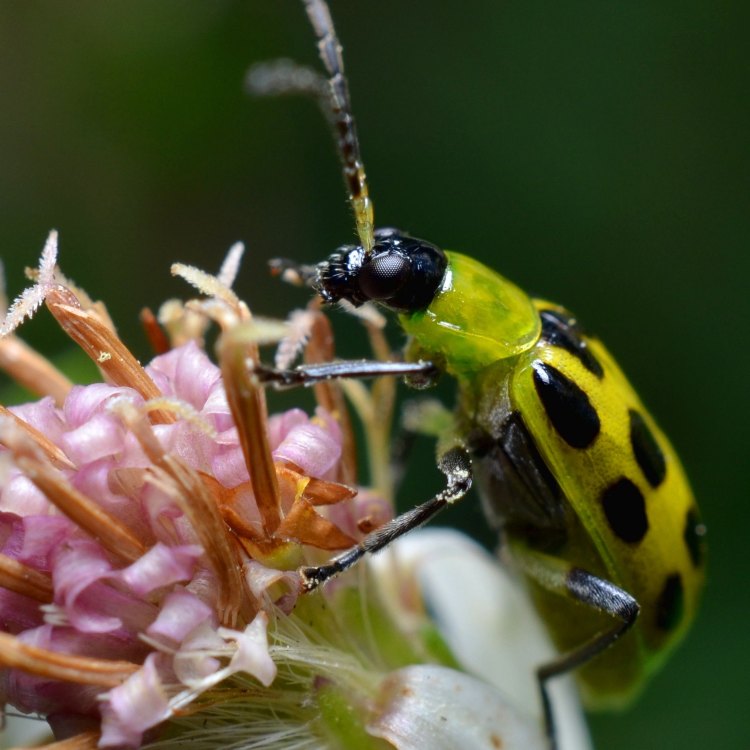
Diabrotica spp.
The Fascinating World of Cucumber Beetles
In the vast world of insects, the cucumber beetle may not be the most well-known or glamorous creature. However, this small but mighty beetle holds many interesting characteristics and plays a significant role in our ecosystems.The cucumber beetle, also known by its scientific name Acalymma vittatum, belongs to the family Chrysomelidae, also known as leaf beetles. These tiny beetles can be found in North and Central America, and they have been reported as agricultural pests in many regions PeaceOfAnimals.Com.
So, what makes the cucumber beetle so unique? Let's delve deeper into its fascinating world.
Appearance and Behavior
Adult cucumber beetles are relatively small, measuring only 3-5 mm in length. They have a characteristic bright yellow or green body with black stripes or spots on their wing covers (elytra). This striking coloration serves as a warning to predators that the beetle is toxic and should be avoided.Cucumber beetles have an average lifespan of 2 to 10 weeks, during which they engage in reproductive behavior. After emerging from their pupae, adults typically mate and lay their eggs on the leaves of plants. Mating can occur multiple times during the beetle's short lifespan, and females can lay up to 350 eggs in their lifetime.
Interestingly, scientists do not know if cucumber beetles produce any sounds or calls. Their tiny size and solitary behavior may explain this Caribou. But, they are not entirely quiet; they can make a high-pitched sound when disturbed or handled.
Solitary Creatures with a Sweet Tooth
Cucumber beetles are solitary creatures and do not form social groups. They typically feed on the leaves, flowers, and fruits of various plants, such as cucumbers, melons, squash, pumpkins, and other members of the cucurbit family.While some may see them as a nuisance, cucumber beetles play a crucial role in pollination and seed dispersal. They collect pollen while feeding on flowers and transfer it to other flowers, ensuring the survival of many plant species.
However, their voracious appetite for cucurbit crops has earned them the title of pests, causing significant damage to agricultural production. Farmers often employ various methods, such as crop rotation and insecticides, to control cucumber beetle populations.
A Tough Life for Cucumber Beetles
Despite their toxic defense mechanism, cucumber beetles are not immune to predators. They face a variety of threats, including birds, spiders, and other insects that feed on them. In addition, the use of insecticides in agriculture is a severe threat to their existence.Unfortunately, their small size and short lifespan make it challenging for them to adapt to changing environments and threats. As a result, the conservation status of the cucumber beetle has not been evaluated, and it is not currently considered a threatened species.
Agricultural Impact and Human Use
The cucumber beetle's impact on the agricultural industry is significant. These pests can cause extensive damage to crops, resulting in significant financial losses for farmers. They can also transmit bacterial wilt disease, which can severely affect cucurbit crops, leading to reduced yields or even crop failure.On the other hand, humans have also found a use for these tiny beetles. In some cultures, they are considered a delicacy and are eaten as a source of protein. However, it is not a common practice globally, and the beetle's toxin may pose a threat to those who consume it.
Distinctive Features and Interesting Facts
The most distinctive feature of the cucumber beetle is its striped or spotted elytra. This unique coloration serves as a warning to predators, indicating the beetle's toxicity.Apart from their role as pollinators and pests, cucumber beetles have some interesting facts worth mentioning. They are non-migratory, meaning they do not have a pattern of regular movement from one place to another. Instead, they prefer to stay in one location and feed on nearby plants.
In addition, some populations of cucumber beetles have developed resistance to commonly used insecticides, making their control even more challenging.
A Tiny But Mighty Species
In conclusion, while the cucumber beetle may seem like a small, insignificant insect, it plays an essential role in our ecosystems. From pollination and seed dispersal to being a pest in agriculture, these tiny creatures have a significant impact on our environment and our lives.Despite their size, cucumber beetles face many challenges, including predators and human interventions. As we continue to learn more about these fascinating creatures, it is essential to ensure their protection and preservation for the sake of our ecosystems' balance. After all, even the tiniest species can have a mighty impact.
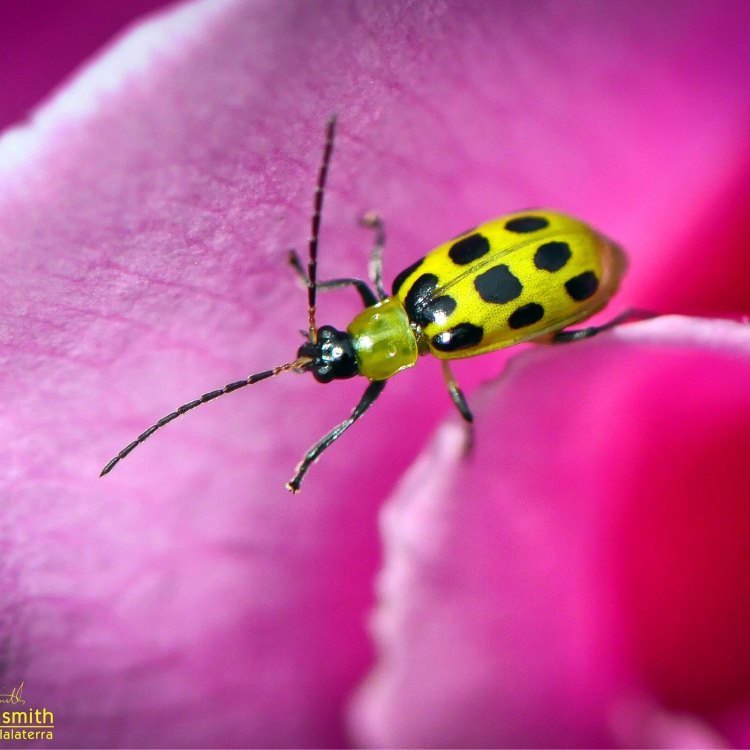
The Intriguing World of the Cucumber Beetle: A Tiny Pest with a Big Impact
Disclaimer: The content provided is for informational purposes only. We cannot guarantee the accuracy of the information on this page 100%. All information provided here may change without prior notice.

